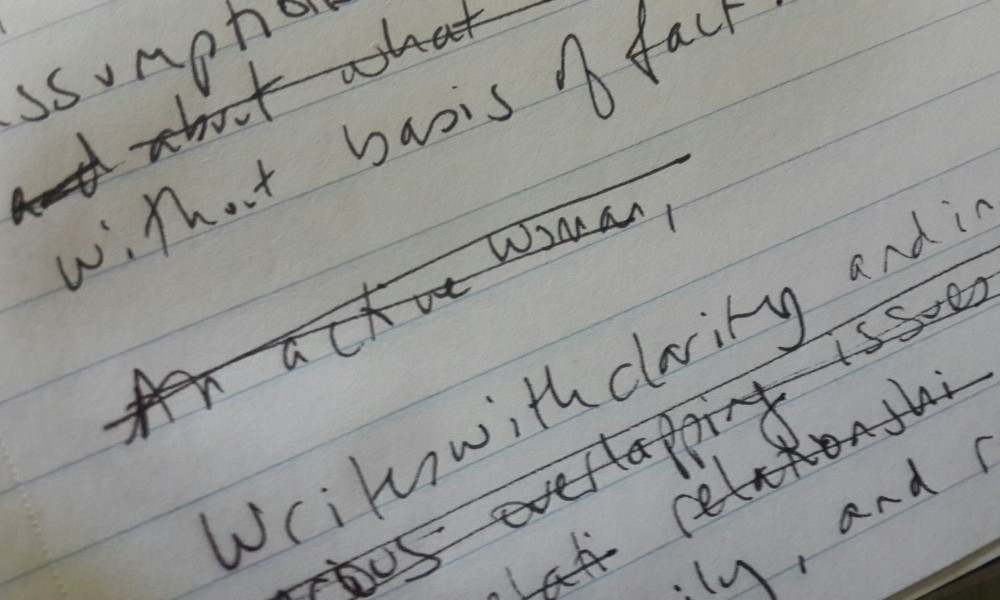An even shittier first draft

Writing longhand is something of a luxury. It takes more time than typing just on the first draft, and at some point I then have to enter it onto the computer. The quality is often messier–an even shittier first draft, to paraphrase Anne Lammott–yet it’s usually a richer experience that somehow lets me make different connections then when I use the computer. Think taking a shortcut on a sidewalk in sneakers versus taking the long way, barefoot, across sun-warmed grass. There’s a lot more information and enjoyment in the latter, even if most of it can’t be used in a practical way.
I thought that the medium choice leading to a different product was some weird quirk of mine, perhaps linked to my age (i.e., old enough not to have keyboarded much during the formative years), or occupation as a writer. But this article in the New York Times explores the research that indicates that making marks on a page rather than tapping keys is a more active form of leaning and connection:
Dr. Berninger goes so far as to suggest that cursive writing may train self-control ability in a way that other modes of writing do not, and some researchers argue that it may even be a path to treating dyslexia. A 2012 review suggests that cursive may be particularly effective for individuals with developmental dysgraphia — motor-control difficulties in forming letters — and that it may aid in preventing the reversal and inversion of letters.
Cursive or not, the benefits of writing by hand extend beyond childhood. For adults, typing may be a fast and efficient alternative to longhand, but that very efficiency may diminish our ability to process new information. Not only do we learn letters better when we commit them to memory through writing, memory and learning ability in general may benefit.
 Download a free copy of “5 Proven Steps to Writing Queries that Sell.” I hate spam and will never share your info.
Download a free copy of “5 Proven Steps to Writing Queries that Sell.” I hate spam and will never share your info.